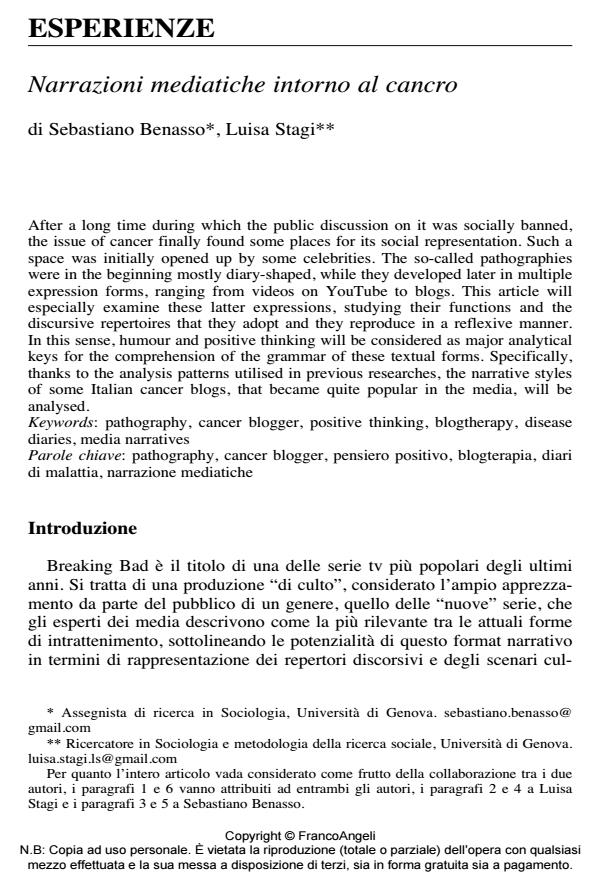Narrazioni mediatiche intorno al cancro
Journal title SALUTE E SOCIETÀ
Author/s Sebastiano Benasso, Luisa Stagi
Publishing Year 2015 Issue 2015/2
Language Italian Pages 16 P. 127-142 File size 88 KB
DOI 10.3280/SES2015-002010
DOI is like a bar code for intellectual property: to have more infomation
click here
Below, you can see the article first page
If you want to buy this article in PDF format, you can do it, following the instructions to buy download credits

FrancoAngeli is member of Publishers International Linking Association, Inc (PILA), a not-for-profit association which run the CrossRef service enabling links to and from online scholarly content.
After a long time during which the public discussion on it was socially banned, the issue of cancer finally found some places for its social representation. Such a space was initially opened up by some celebrities. The so-called pathographies were in the beginning mostly diary-shaped, while they developed later in multiple expression forms, ranging from videos on YouTube to blogs. This article will especially examine these latter expressions, studying their functions and the discursive repertoires that they adopt and they reproduce in a reflexive manner. In this sense, humour and positive thinking will be considered as major analytical keys for the comprehension of the grammar of these textual forms. Specifically, thanks to the analysis patterns utilised in previous researches, the narrative styles of some Italian cancer blogs, that became quite popular in the media, will be analysed.
Keywords: Pathography, cancer blogger, positive thinking, blogtherapy, disease diaries, media narratives
Sebastiano Benasso, Luisa Stagi, Narrazioni mediatiche intorno al cancro in "SALUTE E SOCIETÀ" 2/2015, pp 127-142, DOI: 10.3280/SES2015-002010